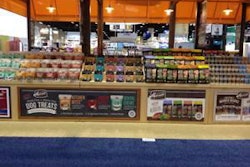When a group of petfood, feed and human food organizations announced their new GMO-related initiative, the Coalition for Safe Affordable Food, in February, nearly lost amid the news was this reason given for forming the coalition and pushing for US federal legislation on GMOs (genetically modified organisms): the Food and Drug Administration (FDA) would define the term "natural" for its use on food and beverage products so human food and beverage companies and consumers have a consistent legal framework for food labels while informing consumer choice.
What was left unwritten was whether such a definition would (or should) apply to animal feed, especially petfood. After all, petfood is a consumer good, with consumer choices, demands and needs driving the industry's development and growth. And that definitely applies to so-called natural petfood. Even though that term has never been defined, legally or otherwise, it has become its own category that just continues to grow, at least in the US and other developed markets.
Market research firms covering petfood regularly report on the natural category and its seemingly unending capacity for growth. For example, GfK explains the soaring sales for grain-free petfood in the US within the context of natural petfood, which, now "accounts for 63% of all food sales in pet retail, and our research shows that this natural trend will continue to move forward quickly," says Maria Lange, senior product manager for GfK Retail and Technology. (Lange will be addressing this and other aspects of the US petfood market at Petfood Forum 2014.)
Note that GfK defines pet retail in terms of the pet specialty sector -- another term without a standard definition; in GfK's case, it means more than 11,000 pet chain stores, independent pet shops, farm and feed stores and veterinary clinics. But no matter which retail sectors are studied, natural petfood is shown as steadily rising. As another example, Packaged Facts often reports on sales in the mass market and grocery channels, in addition to pet specialty (however they define it), and highlights a 23% increase in US natural petfood sales from September 2011 to September 2012. Further, Packaged Facts projects that sales trajectory to continue, with growth of natural petfood expected to "well outpace that of petfood overall during the next five years, with a CAGR of 17% for the 2012-2017 period, similar to that of the 2008-2012 period" (from Pet Food in the US, 10th edition).
Obviously, this continued sales growth is a good thing. The only downside is that pet owners may not really know what they're buying, since there is no regulatory or legal definition for natural petfood. While the Association of American Feed Control Officials ( AAFCO) does include a limited definition in its Official Publication, the market reality is that petfood manufacturers and marketers can pretty much put a "natural" label claim on any of their packaging or in any of their promotions, and it's up to the consumer to determine if that product fits his or her criteria for purchasing a feeding a natural petfood. So, is that such a bad thing -- letting the consumer and marketplace determine which products deserve the sales, no matter how they're labeled? If natural petfood sales continue to grow, does that mean no legal or regulatory definitions are necessary?
It's a good question and one that perhaps no one can answer now. Regardless, as FDA starts to review how petfood ingredients and labeling claims are approved-- along with reviewing its longstanding memorandum of understanding with AAFCO over petfood ingredient definitions -- this could all be addressed. Let's just hope the review process gives the powerful marketplace its due.















